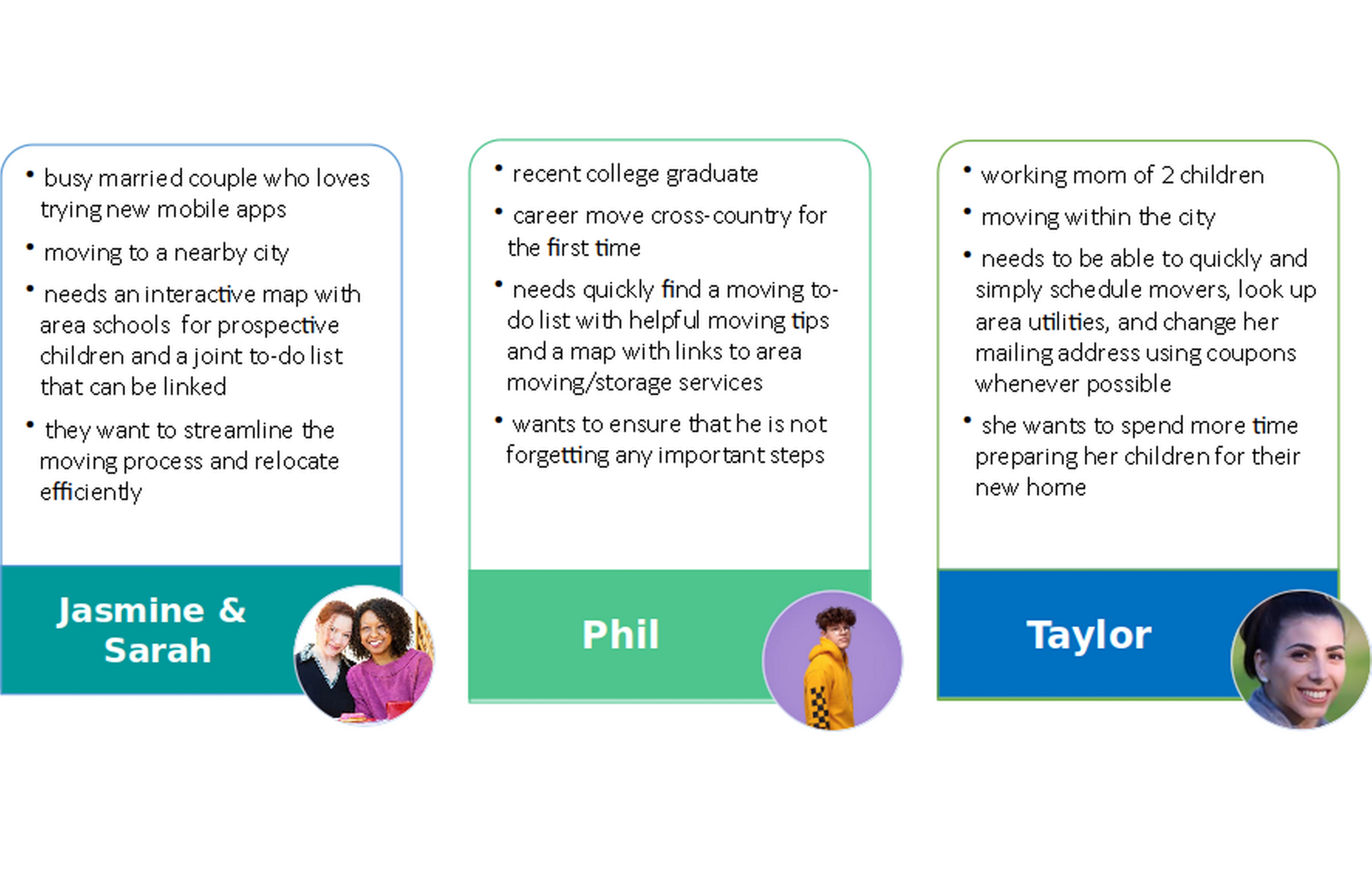Executive Summary
This discovery research project assessed the viability of a new digital moving app to determine whether expanding into this market would be a strategic opportunity for the company. Working as part of a three-person research team, we conducted a two-month investigation including user interviews, contextual inquiry, and competitive analysis. Research focused on understanding the needs of individuals and families relocating within or between cities and identifying the features that would make an app useful and adoptable.
Findings revealed that while users faced significant inefficiencies in the moving process, they were unlikely to adopt a new app unless it could offer substantial integration and convenience. Based on our analysis and user personas, we advised stakeholders in the digital marketing department that the proposed solution would likely be too broad in scope to execute profitably, leading to the project’s strategic pause.
Skills Applied • Human-centered design research
• Semi-structured interviewing
• Contextual inquiry
• Competitive and cultural analysis
• Persona development
• Strategic insight communication
• Collaborative synthesis
The Process: From Ideas to Execution
Scope A fortune 500 company requested exploratory research to determine whether they should expand their digital services to include a mobile app which would assist people in moving locations. The project scope was limited to discovery research only to answer the primary question: Would this new market be a good opportunity for the company to expand further into the digital marketplace?
Type: Discovery Research
Timeline: 2 months
Team: 3 UX Researchers
Stakeholders: Fortune 500 Digital Marketing Department
Assumptions At the start of the project, it was assumed that there was room for an app of this kind as well as the organizational capacity to execute it well enough to meet or exceed user needs.
Project Goals
• Understand the needs of individuals and families who are relocating.
• Evaluate user interest in a proposed moving support app.
• Determine if the app would meet a real market need and offer a competitive advantage.

Defining the Research Questions
- Who is most likely to use the app?
- What elements would be most useful to users?
- Would the the app be used to aid in moving within a city or between cities or states?

Research Approach
Primary Research and Competitive Analysis – Were there any other apps already established that provided the same or similar services? What resources were individuals currently using and how many of those were digital?
User Interviews – Research was conducted with participants in major US. cities. I interviewed adults who fit the following predetermined criteria: they were preparing to move within the next six months, were currently in the process of moving, or had moved within the last six months.
Contextual Inquiry – I asked participants to walk me through their moving process, showing me how they are completing their tasks as well as their pain points and frustrations.
Create User Persona Snapshots – Three persona snapshots were created to represent the most common demographics of individuals relocating that we encountered.

Key Insights
• Participants already relied on a patchwork of digital and analog solutions to manage moving—despite inefficiencies, they were familiar and customizable.
• A new app would only be adopted if it substantially consolidated and simplified fragmented tasks (e.g., scheduling, inventory, address changes, utility transfers).
• Moving is a culturally diverse and context-sensitive experience, making it difficult to design a single app that feels relevant and useful to all users.
• The emotional labor and social coordination involved in moving often outpace what digital tools can anticipate or solve.
Outcome and Impact
Findings were synthesized into a final report and stakeholder presentation. While initial assumptions suggested market readiness, our analysis led the team to recommend against app development. The project was placed on hold, preventing resource misallocation and reinforcing the importance of ethnographic insight in early-stage product strategy.
Reflection
This project highlights the power of ethnographic methods in interrogating the assumptions behind digital innovation. By centering user behavior and cultural complexity, we surfaced insights that challenged product-market fit and redirected company strategy—an example of applied anthropology preventing costly missteps through grounded, human-driven research.
Through interviews, contextual inquiry, and competitive analysis, we uncovered that while people desperately want better solutions, their needs are too diverse—and their workarounds too embedded—for a one-size-fits-all tool to succeed. Our insights helped stakeholders avoid a costly build and sparked deeper conversations about designing for life’s most disruptive transitions.

